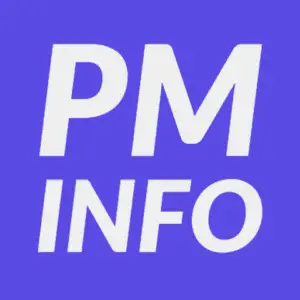The success of our products is closely linked to the way we are able to influence our stakeholders and guide the cross-functional teams on how to build it. Whether you’re working on a new feature, a new product, or an entire product line, it’s important to have a clear and concise plan that guides your team through the development process. This is where product briefs and PRDs come in – they help us outline our product’s purpose, features, and user requirements in a structured manner.
A product brief provides a high-level overview of a product, outlining the key features, target audience, and business goals for the purpose of ideation, while a PRD provides a more detailed document that outlines the specific features and requirements of a product for implementation.
It is easy to get a product brief and a PRD confused- so in this blog post, we’ll explore the differences between product briefs and PRDs, and discuss best practices for creating effective requirements that set your product up for success. We’ll also provide examples of both documents, so you can see firsthand how they can be used to help drive the development process.
What Exactly is a Product Brief?
A product brief is a critical document that outlines the overall vision and direction for a product, helping to align stakeholders and guide the development process. To ensure that your product brief is comprehensive and effective, it should include the following key elements:
- Problem Statement: This section should provide a clear and concise description of the problem that your product is intended to solve. It should explain why the problem is important and how it is currently being addressed (if at all).
- Target User: This section should outline the intended audience for your product, including demographics, interests, and pain points. It’s important to have a deep understanding of your target user in order to design a product that meets their needs and expectations.
- Problem Size: This section should provide an estimate of the size of the problem that your product is intended to solve. This could include market size, customer segments, or other relevant data that helps to illustrate the potential impact of your product.
- Hypothesis: This section should outline your hypothesis for how your product will solve the problem. It should be clear and concise, and highlight the unique value proposition of your product.
- Trade Offs: This section should outline any tradeoffs that you anticipate having to make in order to achieve your business goals. This could include tradeoffs between cost and quality, or between speed and scalability.
- Metrics: Outline the specific metrics that you will use to measure the success of your product. This could include revenue targets, user acquisition goals, or other metrics that are critical to the success of the product. It is great to use this chance to identify both your input and output metrics, as well as the guardrail metrics.

Here’s a simple example of a product brief for a virtual event platform:
| Section | Description |
| Problem Statement | Virtual event platforms are clunky and difficult to use, leading to a poor user experience. |
| Target User | Event organizers and attendees who are looking for a seamless and engaging virtual event experience. |
| Problem Size | The virtual events market is expected to reach $404 billion by 2027, and the number of virtual events has increased by 1000% since the start of the pandemic. |
| Hypothesis | Our virtual event platform will provide a user-friendly interface and a suite of engagement tools that will make virtual events more engaging and memorable. |
| Tradeoffs | We may need to sacrifice some speed in order to ensure that our platform is user-friendly and reliable. |
| Input Metrics | Number of users, average session length, number of events hosted, number of user interactions. |
| Output Metrics | User satisfaction, repeat usage, number of referrals, revenue generated per event, customer lifetime value. |
| Guardrail Metrics | System uptime, page load times, error rates, security incidents, data privacy compliance. |
By including input, output, and guardrail metrics in addition to the key elements of a product brief, you can ensure that you have a comprehensive understanding of the problem you’re trying to solve, who your target user is, and how you plan to achieve your business goals. This will enable you to create a more detailed PRD that outlines the specific features and requirements of your product, and to track your progress against your goals using meaningful metrics.
What Exactly is a Product Requirements Document (PRD)?
While the product brief provides an overarching vision for a product, the Product Requirements Document (PRD) provides a detailed plan for how that vision will be realized. A PRD serves as a roadmap for product development, outlining the specific features, functionality, and requirements that will be necessary to bring the product to life.
Let’s take a closer look at the key elements of a PRD:
- Feature List: A list of all the features that will be included in the product, along with a description of each feature.
- User Stories: A set of detailed descriptions of how the product will be used by the target audience, written from the perspective of the user.
- Acceptance Criteria: A set of criteria that must be met in order for a feature to be considered complete and ready for release.
- Technical Specifications: Detailed technical requirements for the product, including any hardware or software requirements.
- Project Timeline: A timeline outlining the development process, including key milestones and deadlines.
By creating a detailed PRD, you can ensure that your development team is aligned on the product vision and has a clear roadmap for how to bring the product to life. This can help to streamline the development process, reduce confusion and miscommunications, and ultimately lead to a better end product.
Product Brief vs PRD: Key Differences
While both the product brief and the PRD play important roles in the product development process, there are some key differences between the two documents. Let’s take a look at the main differences:
| Key Differences | Product Brief | PRD |
| Purpose | Provides a high-level overview of the product vision, goals, and target audience. | Outlines specific features, functionality, and requirements for the product. |
| Scope | Includes information on the market, competition, business goals, and user needs and pain points. | Focuses specifically on the product and how it will meet the needs of the target audience. |
| Level of Detail | Generally less detailed, provides a general direction for the product. | Includes user stories, acceptance criteria, and technical specifications, provides a detailed roadmap for the development team. |
| Target Audience | Broad stakeholders, including executives, marketing, sales, design, and development teams. | Primarily development and design teams. |
| Length/Format of Communication | Usually a brief document, typically 1-2 pages or slides. Can also be a verbal presentation or video. | A detailed document, often several pages or more, outlining specific requirements, with diagrams, user stories, and acceptance criteria. |

When Should You Use a Product Brief vs a PRD?
It depends on where you are in the product development process. If you’re in the early stages of ideation and need to get everyone on the same page about the product vision and goals, a product brief is a good place to start. Once you have a clear vision for the product, you can create a PRD to outline the specific features and requirements for the development team.
It’s also worth noting that the level of detail in the PRD may vary depending on the product and the development process. Some teams may prefer to create a more detailed PRD, while others may opt for a leaner document that focuses on the most important features and requirements.
In summary, both the product brief and the PRD are important documents in the product development process. While the product brief provides a high-level overview of the product vision and goals, the PRD provides a detailed plan for how to execute that vision. Knowing when to use each document can help to ensure that your development process is efficient and effective.
Tips for Creating Effective Requirements
When it comes to creating effective requirements, there are a few key tips to keep in mind. By following these guidelines, you can ensure that your team is aligned and that your product is meeting the needs of your users and business goals.
- Involve stakeholders and cross-functional teams in the requirements process.
- Collaborating with cross-functional teams will ensure that you are considering all aspects of the product, from user experience to technical feasibility.
- Collaborating with cross-functional teams will ensure that you are considering all aspects of the product, from user experience to technical feasibility.
- Prioritize features and requirements.
- Evaluate each potential feature or requirement based on criteria such as user impact, technical feasibility, and business value.
- Evaluate each potential feature or requirement based on criteria such as user impact, technical feasibility, and business value.
- Write clear and concise requirements.
- Use simple language and avoid jargon or technical terms that may be unclear to others.
- Use user stories or scenarios to provide context and clarify requirements.
- Strategies for handling changes to requirements.
- Establish a process for reviewing and approving changes to requirements.
- Communicate changes clearly to the team.
- Evaluate the impact of changes on the overall product and make adjustments as necessary.
Following these tips will help ensure that your team is aligned and that your product is meeting the needs of your users and business goals. Remember to involve stakeholders, prioritize features, write clear requirements, and be prepared to handle changes along the way.
Conclusion
Creating effective requirements is a critical component of successful product development. Whether you’re using a product brief, a PRD, or a combination of both, it’s important to involve your team, prioritize features, write clear requirements, and be prepared to handle changes along the way. By doing so, you can help ensure that your product is meeting the needs of your users and achieving your business goals.

